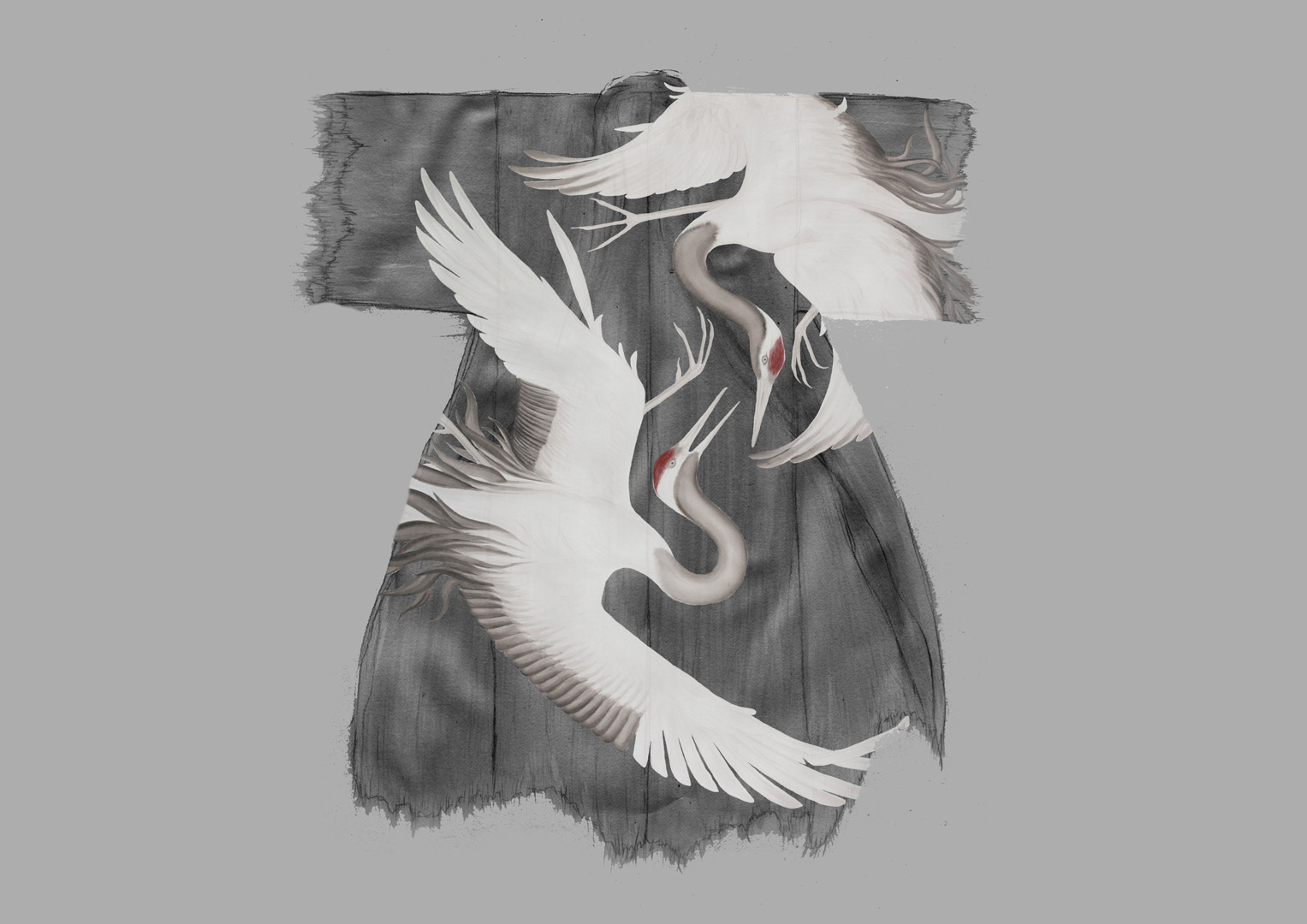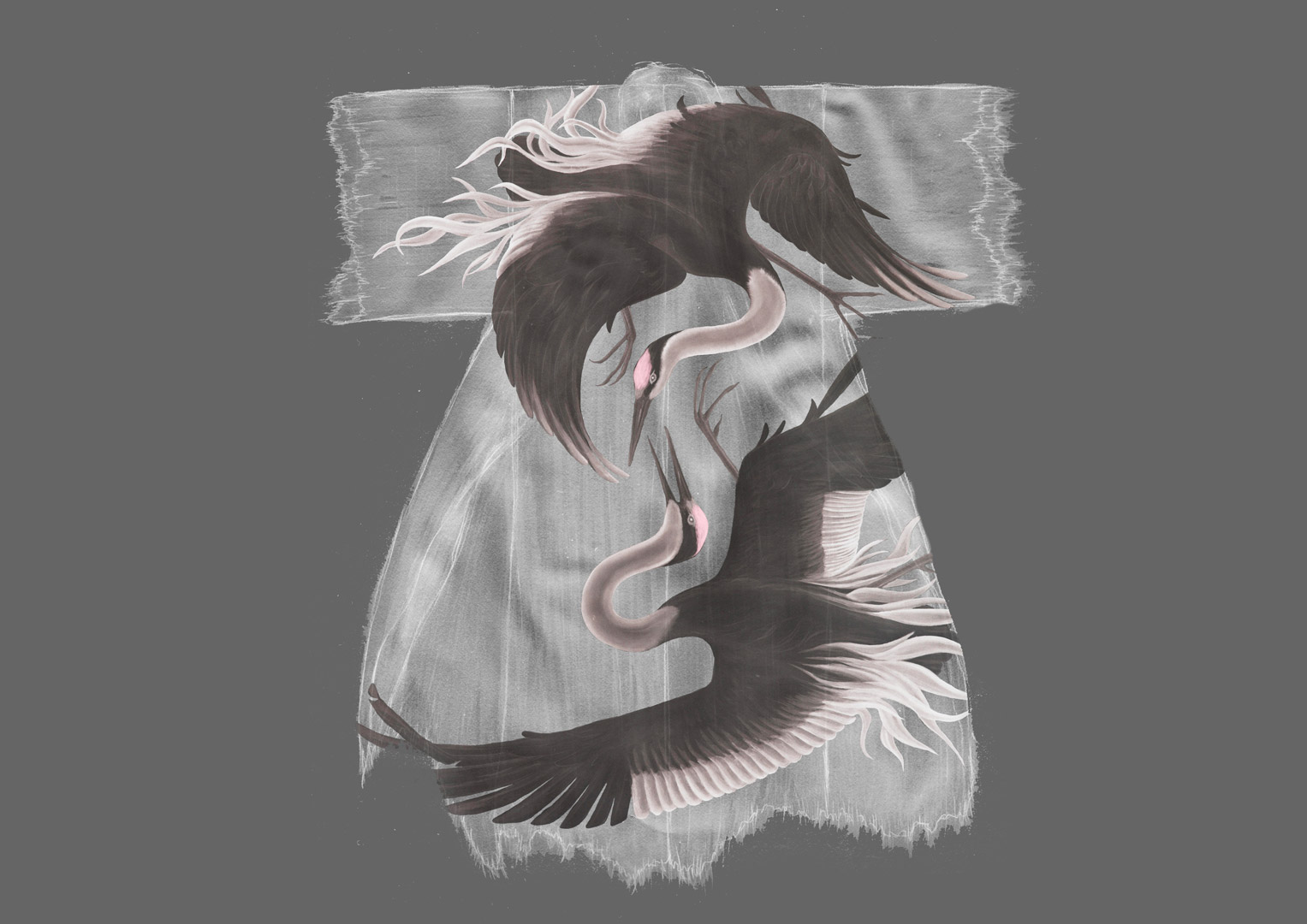Originally ink drawings, I entered these sketches into a Kimono design competition which called for artists to re-interpret and reinvigorate this great Japanese garment. The entry got shortlisted and exhibited at Tokyo Design week in 2014 (Dare to Dream). The traditional motif of the flying crane is frequently featured on Kimonos.
This text was accompanying the images:
The old order is no more, our formerly predictable paths have been fragmented into a caleidoscope of possibilities. We have lost control. We have abandoned traditions and symbols of times past. We have also gained new freedom.
I propose to re-interpret and reintegrate powerful heritage icons into this brave new world.
Some traditional items and symbols may feel left behind and beyond hope of recovery, alluding to a long lost past in their orderly, predictable perfection. By adapting them to our current sensibilities we can create contemporary versions of great cultural icons like the Kimono and enable people to identify with them anew.
My flying cranes are not soaring in harmony and serenity, they don’t know whether they are tumbling or flying, screaming or singing. But they are totally free, not bound by the many constraints of a more rigid and orderly past. The powerful beauty of their erratic movement and spontaneous contortion has its own elegance. They are the cranes of the present, dancing into an unknown future.
Similarly, the Kimono is made of a more raw looking and delicate fabric (silk georgette), and its borders are uneven and frayed. It can be worn layered on top of other clothing, or on its own on top of a simple silk slip dress. Maybe the occasion is formal, maybe casual, maybe a man is wearing it, maybe a mature lady – all these rules have softened. The Kimono is as relevant an icon as it has ever been.



